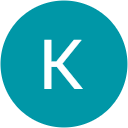The financial year 2026 marks the full, material impact of the Canada Pension Plan (CPP) Enhancement’s second phase, often referred to as CPP2. For Canadian employers, this isn’t just a minor administrative update—it’s a definitive shift that requires immediate payroll budget adjustments, especially for high-earning staff.
Understanding the “Second Earnings Ceiling,” or the Year’s Additional Maximum Pensionable Earnings (YAMPE), is essential to accurately forecasting your 2026 employer payroll burden.
The New Reality: CPP2 (YAMPE) Explained for Employers
The CPP enhancement program introduced two distinct income ceilings for contributions, effectively splitting the mandatory pension deduction into two tiers:
- Tier 1: Base CPP Contributions (CPP1): Contributions are made on income up to the Year’s Maximum Pensionable Earnings (YMPE). The combined rate for base and first additional CPP remains at 5.95% for both the employee and the employer.
- Tier 2: Second Additional CPP Contributions (CPP2): This is the second earnings ceiling, the YAMPE. Contributions are levied on employee income that falls between the YMPE and the higher YAMPE amount. The contribution rate for this second tier is 4.0% for both the employee and the employer.
What is the Max CPP Contribution for 2026?
In 2026, your payroll budgeting must account for both tiers. The total maximum contribution has increased significantly due to the CPP2 layer.
| Contribution Component | 2026 Threshold/Rate | Max Annual Contribution (Employee & Employer) |
|---|---|---|
| Year’s Maximum Pensionable Earnings (YMPE) | $74,600 | $4,230.45 (at 5.95%) |
| Year’s Additional Maximum Pensionable Earnings (YAMPE) | $85,000 | N/A |
| Basic Exemption Amount | $3,500 | N/A |
| CPP2 Contribution Range | $74,600 to $85,000 | $416.00 (at 4.0% on $10,400) |
| TOTAL Maximum CPP Contribution (E/E) | N/A | $4,646.45 |
For every employee whose annual income meets or exceeds the $85,000 YAMPE, the employer is responsible for contributing the maximum annual amount of $4,646.45. This represents a considerable increase in the employer’s annual cost per high-earning employee compared to previous years.
How Does CPP2 Affect Employer Payroll Costs?
The most critical impact is felt in two areas:
1. Increased Total Payroll Burden
For employees earning above the YAMPE of $85,000, your annual payroll contribution per employee has increased by the maximum CPP2 contribution of $416.00 (over the CPP1 maximum of $4,230.45). This must be factored into your total compensation budget.
2. Longer Contribution Periods
Historically, high-earning employees would hit the contribution maximum (YMPE) early in the year, resulting in a “CPP holiday”—months where neither the employer nor the employee paid CPP premiums. With the introduction of the YAMPE, this holiday is now delayed or eliminated for your top earners. Contributions must continue on the CPP2 earnings bracket until they reach the second ceiling. This prolongs the time your payroll software must track and remit contributions.
2026 EI Increases and Maximums
While the CPP changes are complex, Employment Insurance (EI) also sees its contribution ceiling rise:
| EI Metric | 2026 Federal Maximum |
|---|---|
| Maximum Insurable Earnings (MIE) | $68,900 |
| Employee Premium Rate | 1.63% (per $100 of insurable earnings) |
| Maximum Employee Premium | $1,123.07 |
| Maximum Employer Premium (1.4x) | $1,572.30 |
This increase in the MIE means employers will pay EI premiums on an additional $3,200 of income per employee compared to 2025’s $65,700 MIE.
Budgeting for 2026: Action Plan for Employers
To ensure accurate budgeting and compliance for the 2026 fiscal year, we recommend the following steps:
- Update Payroll Projections: Immediately revise your employee cost models to use the 2026 maximums, especially for employees earning above the new $85,000 YAMPE threshold.
- Review Software Capability: Verify that your current payroll software can accurately track and separate the Tier 1 (YMPE) and Tier 2 (YAMPE) contributions for proper T4 reporting (CPP contributions must be split between Box 16 and the new Box 16A).
- Alberta Deduction Tables: While the CPP and EI rates are federal, income tax deductions are province-specific. For Payroll deduction tables 2026 Alberta, the CRA’s Payroll Deductions Online Calculator (PDOC) remains the definitive tool for accurate, real-time calculations. Do not rely on outdated manual tables; use PDOC or expert payroll services.
- Communicate with Staff: Inform high-earning employees that their take-home pay may change slightly due to the extended contribution period, leading to fewer or no “CPP holiday” periods.
Let BOMCAS Canada Handle Your Payroll Complexity
Navigating the nuances of CPP2 and increasing EI maximums is challenging. At BOMCAS Canada, we specialize in providing precise payroll services and expert budgeting advice for businesses across Alberta and Canada.
Don’t let these changes disrupt your budget or lead to compliance penalties. Contact us today to ensure your 2026 payroll is flawless.
Call us at (780) 667-5250 or email info@bomcas.ca










 View Our Location
View Our Location





 181 Meadowview Bay, Sherwood Park, AB T8H 1P7, Canada (Online Clients Only)
181 Meadowview Bay, Sherwood Park, AB T8H 1P7, Canada (Online Clients Only)